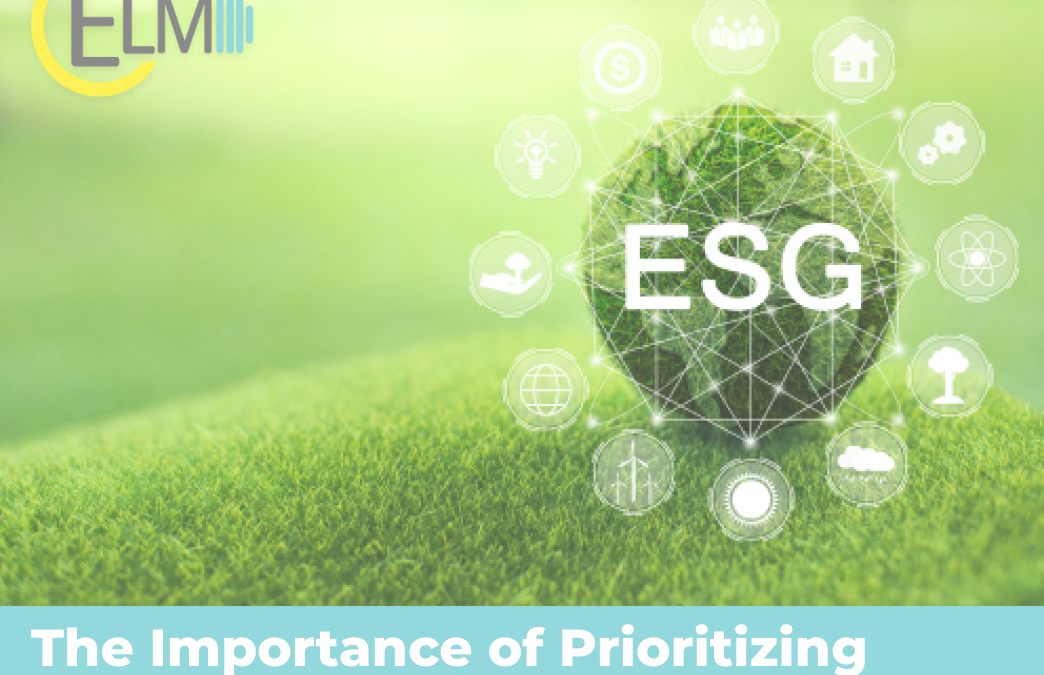The last two decades have seen an exponentially increasing interest in Environment, Social, and Governance (ESG) principles for organizations of all shapes and sizes. Companies that approach their operations with a firm and sincere focus on ESG consistently outperform their peers resulting in preferable outcomes for investors, employees, customers, and their communities. New regulatory requirements coupled with an overwhelming push from consumers means that many companies will need help navigating this nascent space. Now is the time for companies to ‘adapt and adopt’, and make a robust commitment to ESG.
What is ESG?
Looking briefly into the specifics of each pillar of ESG, firms will find numerous reasons why this approach is crucial to the success of their business now and in the future. The word sustainability often leads us to think about green and clean energy, but a sustainable organization is one that is protected from a myriad of risks. Good energy management practices protect against rising utility costs; good social principles protect against losing valued employees when everyone is working from home or being canceled; good governance policies can protect an organization’s leadership from the pitfalls of groupthink and enable a broader view of what lies ahead. ESG is about overall business sustainability.
The Environmental pillar gets a lot of attention and may seem the most straightforward, but this is far from the truth. Whether your goal is to be net-zero energy by 2030, carbon neutral by 2050, or simply lower your bills, there are thousands, perhaps millions, of data points that go into making that a reality. Over 40% of all energy produced in the United States is consumed by commercial and residential buildings and the best time to affect this energy usage per square foot is during construction. Without major energy retrofits, the buildings we build this decade will have similar energy use profiles and will be around long after our efficiency and carbon reduction deadlines have passed. This fact, combined with the availability of efficient building practices and products, is why managing environmental impact should be at the forefront of all new construction planning today. Many companies, like leading global architecture firm Gensler, are setting clear, sustainable goals around carbon emission. Gensler plans to achieve a net-zero carbon portfolio by 2030.
The Social pillar relates mostly to how you impact the well-being of your “community”. Community can be defined as the employees who work for your company, consumers who buy or live in your product, or the neighborhoods around your headquarters. Internally, investing in professional development, offering competitive compensation and benefits, and focusing on health, safety and wellbeing are important places to start. Externally, product safety should be a focus. Community investment and engagement that aligns with your firm’s values is also a highly visible and well received aspect of this pillar. These initiatives are especially important given today’s fight for top talent during what many have dubbed the Great Resignation. Those new to the workforce or others looking for a career change want to align themselves with companies that espouse their values on sustainability, community impact, and inclusion, now more than ever.
The Governance pillar aims to provide stakeholders with tangible transparency and insight into the inner workings of a corporation. Policies focusing on topics like executive and employee compensation rates, board diversity and experience, and overall access to governing documents are the main pieces of the governance pillar. Governance issues can be tricky to tackle due to the nature of policy documents, so we recommend starting with solidifying your company’s values and guiding principles. A clear mission statement is a great first step in defining the values that will trickle down through your corporate governance documents.
Overall, ESG can also provide monetary value. Whether you are lowering operating costs, retaining top talent, or avoiding corporate risk, it pays to get help with your ESG principles and reporting. Additionally, by clearing certain ESG benchmarks set by ESG focused funds, publicly-traded firms may become eligible for additional investments from the over $50 trillion that is expected to be invested in ESG assets by 2025, according to Bloomberg.
The Industry Outlook
ESG principles offer a broad framework for evaluating companies and their performance. Just like any other business principle, different industries will find value in different aspects of what these principles offer. The Commercial Real Estate (CRE) sector is no different, as there are specific benefits that an ESG plan can have for CRE operations. For example, many local community governments and larger municipalities including the City of Boston require diversity, equity, and inclusion (DEI) policies when receiving development proposals on public land. A company in the CRE sector with a fully developed DEI policy will be one step ahead of competitors who would have to scramble to create a policy just for the sake of a development plan.
Within the CRE sector, major firms are leading the charge of defining goals and implementing strategies, but the importance of the ESG principles are relevant for companies of any size. Colliers 2022 Global Investor Outlook found that 64% of responding companies have either already assessed or are currently establishing benchmarks for ESG.
Boston Properties, the largest publicly traded developer, owner, and manager of Class A office properties in the US, proudly touts their top ESG rating. In 2021, Boston Properties proudly earned a tenth consecutive “Green Star” recognition and the highest GRESB 5-star Rating, as well as an “A” disclosure score. These rankings show Boston Properties is an ESG top performer both relative to their peers and overall as a firm.
On the private side of the aisle, Hines, one of the largest privately held real estate investors and managers in the world, believes in creating long-term value by explaining that the ESG lens helps them realize their vision: to be the best real estate investor, partner, and manager in the world. Most recently the firm established the position of Chief Carbon Officer, one of the first of its kind. Led by former VP of Construction, Michael Izzo, the team will engage with the firm’s global teams to provide strategic leadership and ensure continuity and successful progression on the firm’s strategy and commitment to lower their carbon emissions as much as possible. In a recent interview with Fast Company, Michael addressed the interplay between financial and sustainable performance: “We’re not looking for the perfect carbon efficiency or the perfect financial efficiency,” he says. “It’s how do we marry the two and adopt these two different, sometimes competing metrics in order to make better investment decisions.” As more and more firms define and establish goals it will become increasingly important to stay ahead of this movement.
GreenBrick Properties is another company that has recently emerged as a major player in the ESG arena. On top of receiving multiple Fortune awards, including a #1 spot for 2021 Fastest Growing Homebuilders, GreenBrick has recently mastered their ESG presence and strategy. “Green Brick Partners builds communities with lasting value and believes our commitment to pursuing [ESG] goals can be achieved in conjunction with providing superior, long-term returns for our investors, stakeholders, residents, and the cities in which we build. Our Board and management are committed to integrating sustainable business practices to create lasting results that benefit all our stakeholders.”
Walk the Walk, Talk the Talk
ELM Consulting takes pride in analyzing over 500 ESG and sustainability reports each year. We do this to identify our “top performers”, refine our best practices, and deepen our understanding of industry-specific ESG trends. Most importantly, we do this so that you don’t have to. We understand that your high-value team members simply need actionable information to set realistic goals, define a roadmap, and get started achieving results. ELM Consulting can help companies define their ESG strategies, implement their plans, connect them with product suppliers, and maximize all financial benefits from utility incentives and federal grant programs.
What Can Be Done Now?
Still, considering if ESG would add value to your firm? Blackrock sums it up nicely in their annual letter to the CEOs of companies they invest in:
“Companies managed with a focus on sustainability should be better positioned versus their less sustainable peers to weather adverse conditions while still benefiting from positive market environments.”
Of course, implementing an ESG policy can seem complex, and certainly not every company needs a Chief Sustainability Officer, but every company should at least be starting to think about their ESG strategy. ELM Consulting can help firms both large and small take the first step to begin to manage future risk by building the foundation of their ESG strategy now.

